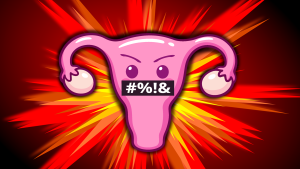Articles / Is it fibroids, or something else?

These are activities that expand general practice knowledge, skills and attitudes, related to your scope of practice.
These are activities that require reflection on feedback about your work.
These are activities that use your work data to ensure quality results.
These are activities that expand general practice knowledge, skills and attitudes, related to your scope of practice.
These are activities that require reflection on feedback about your work.
These are activities that use your work data to ensure quality results.
Uterine fibroids affect up to 80% of women during their reproductive years and while benign, they can share symptoms with uterine cancers, says consultant obstetrician and gynaecologist Dr Reema Kohli.
She shares her advice for investigating and managing fibroids—including signs that could suggest malignancy, considerations in pregnancy, and some interesting developments in the treatment pipeline.
Fibroids develop when myocytes in the uterine wall become abnormal and eventually grow to form tumours. While their pathogenesis is not fully understood, it is thought to be multifactorial.
Both inherited and non-inherited genetic mutations play a key role, Dr Kohli says, as do hormones.
“A lot of research has been done in this area and it’s found that fibroids actually have a higher number of receptors for hormones like oestrogen, progesterone, and an enzyme called aromatase,” she explains. “And women are under the influence of these hormones throughout their reproductive lives.”
Women with higher levels of some angiogenic and fibroblast growth factors are more likely to develop fibroids. A diet high in alcohol (especially beer) and red meat also raises risk.
Fibroids share symptoms with various gynaecological problems, but women most commonly present with heavy bleeding and some form of pelvic pressure, Dr Kohli says.
“For instance, if the fibroid is on the front wall of the uterus, they can have pressure on the bladder, so they may have symptoms like increased frequency of urination,” she says. “If the fibroid is on the back wall of the uterus, which is closer to the bowel, some women will have a feeling of bowel pressure or pelvic pressure or even constipation.”
Other symptoms can include:
Very large fibroids can obstruct the urinary tracts, leading to flank pain and hydronephrosis, she adds.
Pelvic ultrasound should be the first investigation for any woman presenting with heavy menstrual bleeding, pelvic pain and pressure.
“And it should be a transvaginal scan because that’s more sensitive to pick up even the smaller fibroids,” Dr Kohli says.
Depending on the fibroid’s size, a transabdominal ultrasound may also be necessary.
“If your ultrasound diagnoses a fibroid, you can consider comparing it to a previous ultrasound just to make sure it’s not growing too rapidly,” she adds.
Many women have heavy menstrual bleeding for months before seeking treatment so it’s important to screen for anaemia too.
While fibroids are benign, it’s important to look out for signs that could suggest malignancy, Dr Kohli says, noting that uterine sarcomas and endometrial stromal sarcomas are the two most common cancers that can mimic fibroids.
“If it is a solitary tumour growing on the outer surface of the uterus quite rapidly in a postmenopausal woman, and if the woman has other symptoms of cancer—for instance loss of weight, loss of appetite—then definitely consider the possibility of cancer and refer to your specialist appropriately,” she says. “In that case, you should generally consider referral to a gynae-oncologist.”
“A solitary tumour growing on the inside cavity of the uterus which has an irregular surface, which is causing very heavy bleeding and which is growing very rapidly may look like a fibroid on the ultrasound, but there’s a high possibility that that could be cancer as well.”
If fibroids have been confirmed, you can reassure women they are not cancerous and that surgery is not always necessary, Dr Kohli says.
“Actually, if someone’s diagnosed with a fibroid incidentally on an ultrasound, if they have no symptoms, they don’t really need treatment.”
Symptomatic management is an option for some women and can also be instigated while they wait to see a specialist. This might include treatment for:
Uterine artery embolisation is a minimally invasive, uterine-sparing procedure that aims to reduce blood flow to the fibroids, causing them to shrink.
As a rule, this tends to be more successful in women with smaller and fewer fibroids, Dr Kohli says.
“If a fibroid is over 10 centimetres in size or if they have more than three or four fibroids, then I would usually offer them other treatments over the embolisation. And if someone has a pedunculated fibroid or a large fibroid which is attached by a thin stem to the uterus, again, the embolisation therapies don’t work very well.”
Nor is this procedure suitable for women with pelvic inflammatory disease, pre-cancerous changes or malignancy, she says.
Myomectomy (fibroid removal) can be conducted via keyhole surgery, or open surgery if fibroids are very large, Dr Kohli says.
“And if someone is really looking for a definitive treatment, they’ve completed their family, then usually as a last resort a hysterectomy can be offered, which again can be through keyhole surgery or through open surgery based on the size and location of the fibroids.”
Embolisation treatments are not usually an option for women planning a pregnancy, Dr Kohli says, with the limited evidence available indicating it is linked with several obstetric complications.
“Particularly there’s a higher risk of miscarriage, a higher risk of growth restriction of the baby, and a higher risk of intervention and operative delivery, like a caesarean section.”
Fibroids usually remain asymptomatic during pregnancy, she adds, but can sometimes:
Medication-wise, Ryeqo is relatively new to the Australian market for treatment of moderate to severe uterine fibroid symptoms in adult women of reproductive age.
“It’s a combination of GnRH antagonist with estradiol and progesterone,” Dr Kohli explains. “It doesn’t shrink the fibroids, but there is evidence to say that it can help control the heavy bleeding caused by fibroids.”
Ryeqo costs about $135 per month and is not currently PBS-subsidised.
In terms of surgery, minimising incision size is a key focus, Dr Kohli says. “We want to enhance the recovery process and make sure the post-operative hospital stay is short.”
Robotic-assisted techniques are making it easier for surgeons to remove multiple fibroids with minimal access surgery, she adds.
Laparoscopic cryotherapy—which involves inserting a needle to deliver energy that destroys blood supply to the fibroid—is being trialled overseas, Dr Kohli says.
“That’s a procedure still under a lot of research and is showing good promise. It could be a surgery of the future for fibroids.”
Based on this educational activity, complete these learning modules to gain additional CPD.

LDL Management – Why it is Important

Navigating Expanded PBS Access to SGLT2i in General Practice

Cervical Cancer Prevention – Common Questions

Asthma Cases – When to Use Dual vs Triple Therapy




Yes
No
Listen to expert interviews.
Click to open in a new tab
Browse the latest articles from Healthed.
Once you confirm you’ve read this article you can complete a Patient Case Review to earn 0.5 hours CPD in the Reviewing Performance (RP) category.
Select ‘Confirm & learn‘ when you have read this article in its entirety and you will be taken to begin your Patient Case Review.